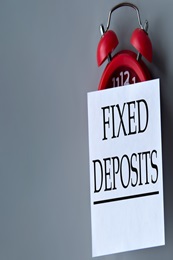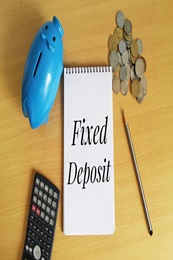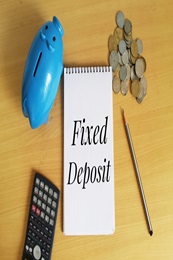Difference Between Cumulative and Non-Cumulative Fixed Deposits Explained
April 25, 2025

When it comes to investing your hard-earned money, Fixed Deposits (FDs) are a popular choice for many. They offer a safe and reliable way to earn steady returns with minimal risk. However, within the realm of fixed deposits, there are two primary options that you need to consider - cumulative or non-cumulative fixed deposits.
Understanding the differences between these two types of fixed deposits is important for making an accurate and informed decision. In this comprehensive guide, we have outlined the difference between cumulative and non-cumulative fixed deposits to help you choose the most suitable option for your financial goals.
What are Cumulative Fixed Deposits?
Cumulative FDs are an excellent choice for long-term investors looking to maximise their returns over time. In a cumulative FD, the interest earned is compounded annually and reinvested along with the principal amount. This means that the interest earned in each financial year is added to the initial investment, resulting in higher overall returns at maturity.
Benefits of Cumulative FDs
1. Higher Returns on Maturity:
The compounding effect leads to increased returns on the cumulative FD, making it an attractive option for long-term investors.
2. Ideal for Long-Term Goals:
Cumulative FDs are well-suited for individuals with long-term financial objectives such as retirement planning or buying a house.
Understanding the Difference Between Cumulative and Non-Cumulative FDs
To better understand the difference between cumulative and non-cumulative fixed deposits, let's look at a comparison table:
| Particulars | Cumulative FD | Non-Cumulative FD |
|---|---|---|
| Definition | Interest is accumulated through the entire FD tenure | Interest is paid out at regular intervals |
| Interest Payout | Paid on maturity | Paid on a monthly, quarterly, half-yearly, or yearly basis |
| Income Flow | No income during the FD tenure | Regular income flow throughout the tenure |
| Reinvestment | Yes | No |
| Suitable for | Salaried individuals or those with stable profits | Retirees, housewives, and freelancers |
Sample Calculation: Let's consider an example to compare the returns from cumulative and non-cumulative fixed deposits. Suppose you invest ₹10,00,000 in both types of FDs with an interest rate of 8% for a tenure of 5 years.
As you can see, the cumulative FD offers higher overall returns than the non-cumulative FD. However, investors, particularly senior citizens, looking for a regular income stream.
Disclaimer: The above calculation is for illustration purposes only. Ujjivan SFB doesn't take any responsibility on the accuracy of the information provided.
Final Thoughts
Consider the aforementioned factors before deciding on the interest pay-outs. It's advisable to select the frequency based on your financial goals. Ujjivan SFBoffers a wide range of Fixed Deposit products with the flexibility of choosing the payment frequency.
Apply for Ujjivan SFB FD today and enjoy higher returns, flexible interest pay-out options, easy account opening process, and more.
FAQs
1. What is the difference between cumulative vs. non-cumulative fixed deposits?
Cumulative FDs reinvest the interest earned, resulting in higher overall returns at maturity. Non-cumulative FDs provide regular interest payouts at discounted rate without reinvestment.
2. Who should invest in cumulative fixed deposits?
Cumulative FDs are suitable for long-term investors seeking long-term growth and who do not depend on regular interest income.
3. Can I choose the interest payout frequency in non-cumulative fixed deposits?
Yes, non-cumulative FDs offer flexibility in choosing the interest payout frequency based on your cash flow requirements.
Latest Blogs

Top Savings Account Schemes to Start the New Financial Year 2025–26
April 19, 2025
The beginning of a new financial year isn’t just about filing taxes or revisiting your investment strategy—it's also the perfect time to re-evaluate where you park your money.

Disappointed with Your Savings Account? Switch to This Small Finance Bank
April 17, 2025
In April 2025, following the Reserve Bank of India’s (RBI) repo rate cut from 6.25% to 6%, several major banks have reduced interest rates on savings accounts.

7 Steps to Get Started Your Home Loan Application Process in India
April 16, 2025
Buying a home is one of the biggest dreams for most of us. But with rising property prices, it's not always possible to pay the full amount upfront. That’s where a home loan in India becomes a helpful option.

How to Keep Your Money Growing in a Volatile Market: A Comprehensive Guide
April 15, 2025
The Indian financial landscape in early 2025 has been quite unpredictable. According to Reuters, equity mutual fund inflows slumped to an 11-month low in March 2025 due to growing concerns around sectoral imbalances and global uncertainties.

Is Closing Your Home Loan Early Good or Bad for Your Credit Score?
April 15, 2025
In the world of personal finance, owning a home is often seen as the pinnacle of financial stability.





